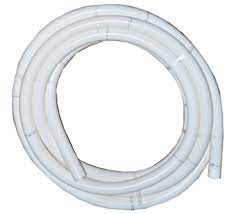Flex pipes are a crucial component in various systems, from automotive exhausts to plumbing and industrial machinery. This guide will delve into what a flex pipe is, its uses, lifespan, and cost considerations, providing essential information for anyone needing a durable, flexible solution for their piping needs.
Understanding Flex Pipes
What is a Flex Pipe?
A flex pipe, or flexible pipe, is a section of piping that allows for movement between the parts it connects. These pipes are designed to handle stress caused by vibration, thermal expansion, and other physical forces, making them essential in systems where rigid pipes might fail.
Key Characteristics of Flex Pipes
- Material: Commonly made from metals like stainless steel, flex pipes can also be found in rubber and other flexible materials.
- Design: They often feature a corrugated surface, which enhances their flexibility and resistance to kinks and breaks.
Applications of Flex Pipes
What is Flex Pipe Used For?
Flex pipes are used in a variety of applications:
- Automotive: In car exhaust systems, they absorb vibrations and reduce stress from the engine and exhaust structure.
- Plumbing: They accommodate shifts in a building’s structure or in the ground to prevent pipe breakage.
- Industrial: Used in machinery and systems that move or vibrate, preventing premature failure of the system.
Durability and Maintenance

How Long Should Flex Pipes Last?
The lifespan of a flex pipe depends significantly on its environment and usage. In automotive applications, a well-maintained flex pipe can last anywhere from 5 to 10 years. In less demanding environments, such as certain plumbing applications, they can last even longer.
Maintenance Tips
Proper Installation: Ensuring flex pipes are correctly installed can extend their life by reducing unnecessary stress.
Regular Inspection: Checking for cracks, rust, and wear is vital.
Cost and Installation
How Much Does a Flex Pipe Cost?
The cost of a flex pipe varies depending on its material, size, and specific application. In industrial or plumbing contexts, the cost can vary even more widely based on the requirements of the system.
Installation Considerations
While some flex pipes can be installed by a knowledgeable DIYer, professional installation is recommended to ensure maximum efficiency and safety.
Flex Pipe Maintenance
Proper maintenance of flex pipes is crucial for ensuring their longevity and optimal performance. Regular inspections and correct installation play significant roles in preventing leaks and other failures. Carefully inspect the flex pipe and assess if it needs patching or replacement, should its structural integrity be compromised.
Frequently Asked Questions (FAQs) on Flex Pipes
-
Do you really need a flex pipe?
Yes, flex pipes are essential in many systems where movement and flexibility are necessary to absorb vibrations, prevent structural stress, and accommodate thermal expansion.
-
Can flex pipes be repaired?
Yes, some flex pipes can be temporarily repaired with sealants or tape, though a permanent solution usually involves replacement.
-
Are flex pipes environmentally friendly?
Most flex pipes are made from recyclable materials like stainless steel. Their durability and efficiency also contribute to energy conservation by maintaining the integrity of the systems in which they are used.
Flexing Your Good Plumbing With Quality Flex Pipes
Flex pipes play a critical role in many mechanical and structural systems, providing flexibility and strength where rigid pipes cannot. Whether for industrial machinery, automotive exhausts, or home plumbing systems, understanding the proper use and maintenance of flex pipes can save time, money, and prevent system failures.
If you’re looking for high-quality flex pipes and other essential plumbing paraphernalia, visit AquaGuard 5000. Our products ensure robust performance and durability for all your pool repair and restoration needs.







